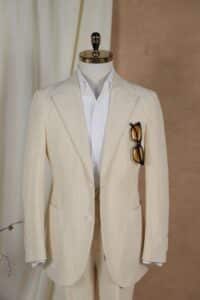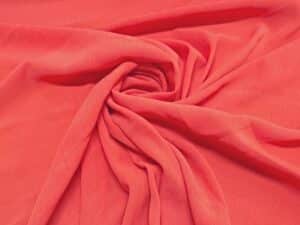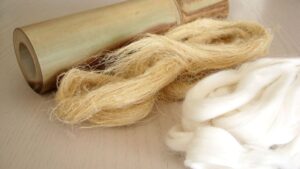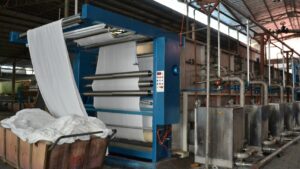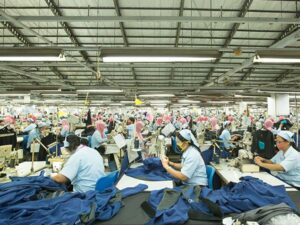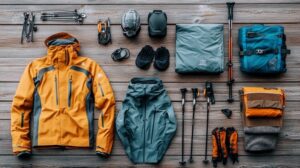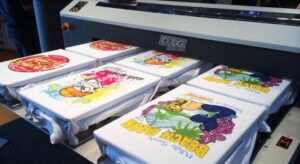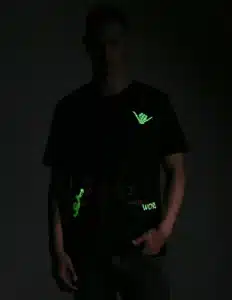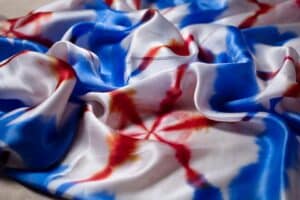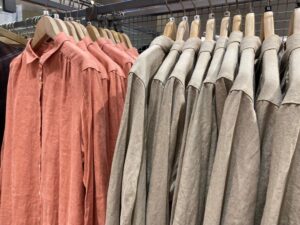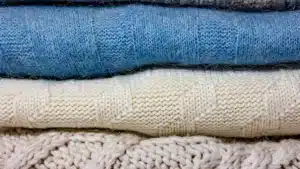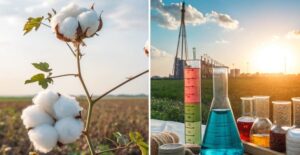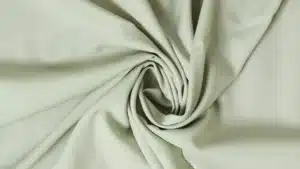
Non-iron fabric has changed how we think about clothes. It stops wrinkles and keeps clothes smooth without ironing. This fabric gets special treatments during production to stay wrinkle-free. Brooks Brothers, making non-iron shirts since the 1950s, says 90% of its shirt sales are from these designs. Brands like Eton and Nordstrom also use wrinkle-free fabrics, making them popular everywhere. Whether you're hurrying to work or packing for a trip, non-iron fabrics are super handy and keep you looking neat.
Key Takeaways
Non-iron fabric stays smooth, saving time for busy people or travelers.
Special chemicals, like cross-linking, stop wrinkles but might be harmful, like formaldehyde.
Picking non-iron fabrics with safety labels, like OEKO-TEX, can make them safer and better.
Take care by washing in cold water and skipping bleach to keep them wrinkle-free.
Think about the environment since non-iron fabrics often have bad chemicals and plastics that add to waste.
How Non-Iron Fabric Works

The Science of Wrinkle-Free Fabrics
Why natural fabrics wrinkle
Natural fabrics like cotton wrinkle because of their structure. Cotton has cellulose, which has both tight and loose areas. Water or pressure breaks hydrogen bonds in these areas. When bonds reform in new spots, wrinkles appear. This is why cotton creases after washing or wearing.
How chemical treatments prevent wrinkles
Chemicals help fabrics resist wrinkles by changing their structure. Crosslinking agents, like urea derivatives, join cellulose chains. This stops movement when fabric gets wet or stressed, keeping it smooth. Titanium dioxide is sometimes added to lower formaldehyde release. These treatments make fabrics wrinkle-free, perfect for non-iron shirts.
Chemical Process | Description |
|---|---|
Cross-linking | Links cellulose chains to stop movement and wrinkles. |
Use of Formaldehyde | Commonly used but can cause health problems. |
Alternative Agents | Titanium dioxide lowers formaldehyde and keeps fabric strong. |
Common Treatments for Non-Iron Fabrics
Formaldehyde-based finishes
Formaldehyde finishes are often used to stop wrinkles. They bond cellulose molecules, making fabric smooth. But formaldehyde can cause skin issues and is a carcinogen.
Resin applications and their effects
Resins, like urea melamine, make fabrics wrinkle-resistant by linking cellulose. These treatments can weaken fabric over time.
Manufacturing Process of Non-Iron Shirts
Heat-setting techniques for wrinkle resistance
Heat-setting is key to making non-iron shirts. Heat is applied after chemical treatments to lock cellulose molecules. This keeps the fabric wrinkle-free and durable, like synthetic materials.
Post-treatment processes for durability
After heat-setting, extra steps make fabric stronger. Coatings are added to protect fibers and reduce wear. Proper Cloth keeps formaldehyde levels below 35 ppm, much lower than the 75 ppm standard. This balance ensures non-iron shirts are safe and long-lasting.
Benefits of Non-Iron Fabric

Convenience and Time Efficiency
No need for ironing
Non-iron shirts save time by skipping ironing. The fabric stays smooth after washing, ready to wear. This is great for busy people or those who dislike ironing. With non-iron fabric, you can focus on your day without worrying about wrinkles.
Perfect for travel and busy lifestyles
Non-iron shirts are great for trips. They pack easily and stay neat in your suitcase. Whether at a meeting or sightseeing, you’ll look sharp. These low-maintenance fabrics are perfect for fast-paced lives.
Professional and Polished Appearance
Maintains a crisp look throughout the day
Wrinkle-free fabric keeps you looking professional all day. Non-iron shirts stay smooth, even after long hours. Heat curing makes them resist wrinkles better. Proper Cloth uses safe formaldehyde levels under 35 ppm for quality and safety.
Aspect | Details |
|---|---|
Formaldehyde Levels | Proper Cloth’s treatment keeps formaldehyde under 35 ppm. |
Care Recommendations | Wash gently or tumble dry lightly for best results. |
Wrinkle Resistance | Heat curing boosts wrinkle resistance for easy care. |
Enhanced Durability
Strengthened fibers due to treatments
Non-iron fabric gets special treatments to make it stronger. These processes help shirts last longer and resist damage. PUREPRESS™ technology improves durability while keeping the fabric smooth.
Resistance to wear and tear
Non-iron shirts handle daily use well. Their strong fibers and wrinkle resistance reduce damage over time. Tests show non-iron fabrics perform better than others. PUREPRESS™ scores 4.78 in wrinkle resistance, beating other blends.

Non-iron shirts mix ease, style, and strength, making them a smart choice for today’s wardrobes.
Drawbacks of Non-Iron Fabric
Environmental Impact
Harmful chemicals in production
Making non-iron shirts uses chemicals that hurt nature. Factories use formaldehyde resins to stop wrinkles, but waste from these chemicals pollutes water and soil. This harms plants and animals. The process also uses a lot of energy, adding to air pollution and climate change.
Synthetic parts that don’t break down
Non-iron fabric has synthetic materials that last a long time. These make the fabric strong but create waste that doesn’t decompose. When thrown away, non-iron shirts stay in landfills for years, adding to trash problems. Picking eco-friendly fabrics can help reduce waste.
Health Concerns
Skin problems from leftover chemicals
Wrinkle-free fabric treatments can leave chemicals that bother sensitive skin. If you have allergies, wearing non-iron shirts might cause itching or rashes. Washing them well before wearing helps, but some chemicals may still stay on the fabric.
Risks from formaldehyde exposure
Formaldehyde in non-iron fabric can harm your health. Long exposure may cause breathing issues or even cancer. Some brands limit formaldehyde, but not all follow strict rules. Look for labels with safety certifications to avoid risky products.
Comfort and Feel
Stiffer than untreated fabrics
Non-iron shirts often feel harder than regular ones. The wrinkle-free treatments change the fabric’s texture, making it less soft. This stiffness might bother people who like smooth, comfy clothes.
Less breathable in some cases
Treated fabrics can trap heat, making them less airy. This makes non-iron shirts uncomfortable in hot weather or for long wear. Comparing treated and untreated fabrics shows these differences:
Fabric Type | Treatment Level | Comfort Level | Breathability Level |
|---|---|---|---|
Treated Non-Iron | Strong chemical treatment | High | Moderate |
Untreated | No treatment | Moderate | High |
If you want softer and cooler clothes, untreated fabrics might suit you better.
Practical Tips for Choosing Non-Iron Fabrics
Understanding Labels and Certifications
Look for safety labels like OEKO-TEX
When buying non-iron fabrics, check for safety labels. Certifications like OEKO-TEX mean the fabric is safer to use. These labels show the material has low harmful chemicals. OEKO-TEX ensures it has little formaldehyde, making it better for families. Picking certified fabrics lowers health risks and improves quality.
Check fabric mix for comfort
The fabric mix affects how comfy it feels. Non-iron fabrics often have treatments that make them stiff. Look for blends with cotton and fewer synthetic materials. This mix keeps the fabric smooth but more comfortable. Always read the label to know what you're getting.
Proper Care for Wrinkle-Free Fabrics
Follow care instructions for washing and drying
Taking care of wrinkle-free fabric helps it last longer. Use these tips to keep it in good shape:
Wash with cold water to protect the fabric’s bonds.
Use mild detergent to avoid harming the material.
Dry on low heat or air dry to keep it smooth.
Studies show chemical bonds in the fabric help stop wrinkles. Washing wrong can weaken these bonds and make the fabric less effective.
Protect the wrinkle-free coating
To keep your fabric looking nice, avoid harsh treatments. Bleach and high heat can ruin the wrinkle-resistant coating. Ironing isn’t needed and might damage the finish. Handle your clothes gently to keep them smooth and long-lasting.
Balancing Pros and Cons
Choosing convenience over comfort
Non-iron fabrics save time and effort, great for busy people. But they might feel stiff and less comfy. If you need easy-care clothes for work or travel, they’re a good pick. For relaxing wear, untreated fabrics may feel better.
Think about the environment when buying
Non-iron fabrics can harm the environment with waste and chemicals. They also don’t last as long as untreated ones. For a greener choice, pick untreated fabrics or eco-friendly brands.
Aspect | Non-Iron Fabrics | Must-Iron Fabrics |
|---|---|---|
Health Impact | Treated with chemicals, possible health risks | Safer, no chemical treatments |
Longevity | Lasts longer, softens with washing | |
User Experience | Stiff and less breathable | Softer and more breathable |
By thinking about these points, you can choose what works best for you.
Non-iron fabric helps you look neat with little effort. Its wrinkle-free design saves time and fits busy lives. But, there are downsides. While it cuts down on ironing, chemicals used can affect health and comfort. Knowing these details helps you choose wisely.
Aspect | Benefits | Drawbacks |
|---|---|---|
Health Impact | Less need for ironing | Chemicals like formaldehyde may harm health and cause cancer. |
Feel/Texture | Easy to care for and smooth | Feels stiffer than regular cotton shirts. |
Breathability | N/A | Coatings block airflow, making it hot and sticky. |
Lifespan | N/A | |
Required Ironing | Saves time ironing | Some ironing might still be needed for a sharp look. |
Think about these pros and cons to see if non-iron fabric works for you.
FAQ
How is non-iron fabric different from regular fabric?
Non-iron fabric gets special treatments to stop wrinkles. Heat-setting locks the smoothness, making it easier to care for than regular fabric.
What clothes are made with non-iron fabric?
Non-iron fabric is used in shirts, blouses, and pants. These clothes stay neat and need less effort to look good.
How do you know if fabric is non-iron?
Check for tags saying "non-iron" or "wrinkle-free." Labels like OEKO-TEX mean safer treated fabrics. Read product details to be sure.
Can non-iron fabric be eco-friendly?
Some brands use safer chemicals and green methods. Look for eco-labels, but most non-iron fabrics still harm nature due to chemicals.
What should you not do when washing non-iron fabric?
Don’t use bleach, hot water, or strong soaps. These ruin the wrinkle-free coating. Follow care labels to keep it lasting longer.

